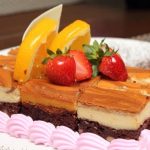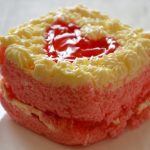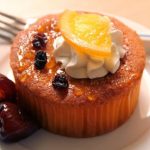Cake decoration is an essential aspect of creating visually appealing and memorable desserts. One way to take your cake decorating skills to the next level is by learning how to make figures for cake decoration.
Handmade figures can add a unique and charming touch to any cake, making it stand out from the rest. Whether you are a professional baker looking to expand your repertoire or a home baker wanting to add a personal touch to special occasions, mastering the art of creating fondant figures is a valuable skill.
To embark on this creative journey, you will need the right tools and materials at your disposal. From fondant and gum paste to shaping tools and edible colorings, each component plays a crucial role in bringing your cake figures to life. Understanding how to choose the right type of fondant is also key in ensuring that your figures not only look great but taste delicious as well.
In this guide, we will delve into the various techniques involved in shaping and molding fondant into intricate figures for cake decoration. From basic steps for beginners to more advanced methods for experienced decorators, we will cover everything you need to know to create stunning edible works of art. So roll up your sleeves, get your creativity flowing, and let’s explore the wonderful world of making figures for cake decoration.
Tools and Materials Needed
When it comes to creating figures for cake decoration, having the right tools and materials is essential to ensure a successful outcome. Some of the basic tools you will need include fondant or gum paste, rolling pin, small knife or modeling tools, edible glue or water for attaching pieces together, food coloring for tinting fondant, and a foam pad for shaping and drying figures.
Additionally, having a work surface such as a non-stick mat or parchment paper will make the process easier.
Choosing the right materials is also crucial in creating durable and aesthetically pleasing figures. Opting for quality fondant or gum paste is key to ensuring that your figures hold their shape and details well. It is important to invest in good quality food coloring as well, as this will allow you to achieve vibrant and consistent colors for your figures. Edible glaze can also be used to add shine and protection to your finished figures.
To further enhance your figure-making skills, consider expanding your collection of tools with items such as silicone molds for creating intricate details, edible luster dust for adding shimmer, and petal dust for realistic shading effects. By having a well-stocked toolbox and premium materials on hand, you will be equipped to create stunning and professional-looking figures for cake decoration.
Choosing the Right Fondant
When it comes to making figures for cake decoration, choosing the right fondant is crucial for achieving the desired results. There are several types of fondant available in the market, each with its unique properties and characteristics. Here is a breakdown of some common types of fondant and how to choose the best one for making figures:
- Traditional Fondant: Traditional fondant is made from sugar, water, and glucose. It has a smooth texture and dries firm, making it ideal for shaping intricate figurines.
- Gum Paste: Gum paste is similar to traditional fondant but contains added tylose powder or gum tragacanth, which gives it extra elasticity and strength. This makes it perfect for creating detailed and delicate figures that need to dry hard.
- Modeling Chocolate: Modeling chocolate is another great option for making figures as it is pliable, easy to work with, and has a delicious taste. It is especially useful for creating realistic-looking figures due to its ability to hold intricate details.
When choosing the right fondant for making figures, consider factors such as the complexity of the design, drying time needed, and personal preference in terms of taste and texture. Experiment with different types of fondant to see which one works best for your specific project.
Here Are Some Tips on How to Make Figures Using Different Types of Fondants
- For traditional fondant: Knead a small amount until soft and pliable before shaping into the desired figure. Use edible food coloring gels to add color if necessary.
- For gum paste: Add tylose powder or gum tragacanth gradually while kneading until you reach the desired consistency. This will help the figure hold its shape better when drying.
- For modeling chocolate: Warm up the chocolate slightly by kneading it in your hands before shaping it into a figure. Use sculpting tools or even toothpicks to create fine details.
Choosing the right fondant can make a significant difference in how your figures turn out and how they complement your cake’s overall design. Don’t be afraid to mix and match different types of fondants to achieve unique effects and create show-stopping decorations that will leave everyone impressed at your next event or celebration.
Basic Techniques
Gathering Your Tools and Materials
Before you begin creating figures for cake decoration, it is crucial to gather all the necessary tools and materials. These may include fondant, a rolling pin, modeling tools, edible glue or water for adhering pieces together, food coloring for adding color, and cornstarch or powdered sugar for dusting to prevent sticking. Having everything you need within reach will make the process smoother and more efficient.
Shaping the Fondant
To start shaping your fondant into figures, begin by kneading a small amount until it is soft and pliable. Next, roll it out to the desired thickness using a rolling pin dusted with cornstarch or powdered sugar to prevent sticking. Use various sizes of modeling tools to cut out shapes or create details such as eyes, ears, and facial features. Remember to work quickly as fondant can dry out easily.
Molding the Figures
Once you have all your components ready, carefully mold and shape them into the desired figure. Use your fingers and tools to smooth out any rough edges and create intricate details. If pieces need to be attached together, use a small amount of edible glue or water to adhere them securely. Be patient and take your time when molding the figures to ensure they turn out as you envisioned.
With these basic techniques on how to make figures for cake decoration in mind, you are well on your way to creating stunning and unique designs for your cakes. Practice makes perfect, so don’t be discouraged if your first attempts are not exactly what you had hoped for – with time and experience, your skills will improve, allowing you to create intricate and eye-catching figures that will wow anyone who lays eyes on your beautifully decorated cakes.
Advanced Techniques
When it comes to cake decoration, the advanced techniques can truly take your creations to the next level. One of the key ways to elevate your fondant figures is by adding intricate details through painting. To do this, you will need edible food coloring or gel colors and very fine paintbrushes.
Start by mixing a small amount of the food coloring with a drop of clear alcohol, such as vodka or lemon extract, to create a paint-like consistency. Then, carefully paint onto your fondant figure to add depth and dimension.
Adding texture is another great way to make your cake figures more realistic and visually appealing. You can achieve texture by using tools such as sculpting tools, impression mats, or even household items like toothpicks and sponges. For example, you can create fur texture on an animal figure by gently pressing a fork into the fondant or using a textured rolling pin for scales on a dragon figure.
Incorporating different colors into your fondant figures can also make them stand out. One technique is to layer different colors of fondant together and then gradually blend them using a ball tool or your fingers to create a marbled effect. You can also use edible dust or shimmer powder to highlight certain areas of your figures and give them a touch of sparkle. Experimenting with various color combinations and techniques will help you create unique and eye-catching cake decorations.
Troubleshooting
Cracking or Drying Out
One common issue that may arise when making fondant figures is cracking or drying out. This can happen if the fondant is not properly kneaded or if it is exposed to air for too long. To prevent this, make sure to knead your fondant thoroughly before shaping your figures and keep it covered when not in use. If you notice cracks starting to form, try adding a tiny amount of shortening to the fondant and kneading it until smooth again.
Sticky or Gooey Texture
Another issue that can occur is a sticky or gooey texture in your fondant figures. This usually happens when too much moisture is introduced during the shaping process. To fix this problem, try adding a small amount of powdered sugar to the fondant and kneading it until the desired consistency is reached. Additionally, make sure your hands are clean and dry when working with fondant to avoid adding extra moisture.
Sagging or Collapsing Figures
Sometimes, fondant figures may sag or collapse while drying due to their weight or lack of support. To avoid this, consider using toothpicks, skewers, or even wire armatures inside larger figures for added stability. Allow your figures to dry completely in a cool, dry place before placing them on top of the cake to prevent any mishaps. If you notice any sagging during the drying process, gently reshape the figure and add additional support if needed.
By being aware of these common issues and following these solutions, you can troubleshoot any problems that arise while making fondant figures for cake decoration. With practice and patience, you will be able to create stunning and intricate cake decorations that will surely wow anyone who sees them.
Inspiration and Ideas
Creating figures for cake decoration is a fun and creative way to add a personalized touch to any baked masterpiece. Whether you are making a birthday cake, wedding cake, or just want to elevate your baking skills, learning how to make figures for cake decoration can take your creations to the next level. In this section, we will explore some creative ideas and provide inspiration for different types of cake figures that you can try making.
One popular choice for cake figures is animals. From cute and cuddly creatures like teddy bears and rabbits to majestic wildlife such as lions and elephants, there is no limit to the animal figures you can create out of fondant. By using basic molding techniques and adding details like eyes, ears, and fur texture, you can bring these edible animals to life on top of your cakes.
Another common theme for cake figures is flowers. Delicate petals, vibrant colors, and intricate designs make floral figures a stunning addition to any cake. Whether you want to make a simple rose or an elaborate bouquet of mixed flowers, mastering the art of fondant flower-making will take your cake decoration skills up a notch. Using flower cutters, shaping tools, and edible food coloring, you can create beautiful blossoms that will impress anyone who sees them on your cakes.
When it comes to character figures for cakes, the possibilities are endless. From beloved cartoon characters to iconic superheroes, creating fondant replicas of famous personalities can be both challenging and rewarding. By paying attention to details like facial expressions, costumes, and accessories, you can capture the essence of these characters in edible form. With practice and patience, you can master the art of character figure-making and showcase your favorite icons on your custom-designed cakes.
| Cake Figure Theme | Description |
|---|---|
| Animals | Create cute or realistic animal figures using fondant molding techniques. |
| Flowers | Add delicate floral touches with edible fondant flowers in various colors and shapes. |
| Characters | Bring famous characters to life on cakes by sculpting detailed fondant replicas. |
Tips for Success
In conclusion, mastering the art of creating figures for cake decoration can truly take your baking skills to the next level. By incorporating handcrafted figures into your cakes, you can add a personalized touch that sets your creations apart from the rest. With the right tools, materials, and techniques at your disposal, you can bring any design or idea to life through fondant modeling.
One of the key factors in successfully making figures for cake decoration is choosing the right fondant. Whether you opt for marshmallow fondant, sculpting fondant, or gum paste, selecting the best type for your specific project is essential. Understanding how each type of fondant works and behaves will help you achieve the desired results when molding intricate details or delicate shapes.
Furthermore, don’t be afraid to experiment with advanced techniques such as painting details, adding texture, or mixing colors to create unique and eye-catching figures. Remember to troubleshoot along the way by addressing common issues like drying out too quickly or figures losing their shape.
By staying patient and persistent in refining your skills, you will soon be able to create stunning figures that elevate your cakes to works of art. So go ahead and let your creativity run wild as you dive into the world of figure-making for cake decoration.
Frequently Asked Questions
What Do You Make Cake Figures Out Of?
Cake figures are typically made out of fondant, gum paste, or modeling chocolate. Fondant is a popular choice due to its smooth finish and ability to hold intricate details. Gum paste is another common material known for its pliability and quick-drying nature.
How Do You Make Edible Cake Toppers?
Making edible cake toppers involves shaping the desired figures out of fondant or gum paste, coloring them with edible food coloring, allowing them to dry and harden, then placing them on the cake before serving. Various tools like rolling pins and cutters are often used in the process to achieve the desired shapes.
What Material Is Used for Cake Toppers?
Cake toppers can be made from various materials such as fondant, gum paste, modeling chocolate, marzipan, or even wafer paper. Each material offers different advantages in terms of flexibility, durability, and appearance. It ultimately depends on the design and purpose of the cake topper when choosing the appropriate material for creating it.

Welcome to my blog about home and family. This blog is a place where I will share my thoughts, ideas, and experiences related to these important topics. I am a stay-at-home mom with two young children. I hope you enjoy reading it! and may find some helpful tips and ideas that will make your home and family life even better!





